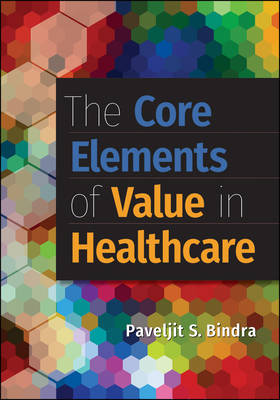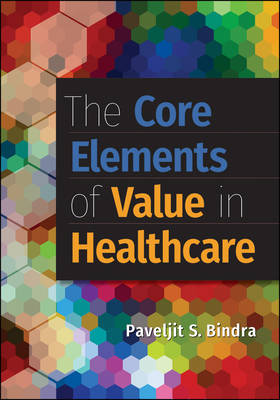
- Afhalen na 1 uur in een winkel met voorraad
- Gratis thuislevering in België vanaf € 30
- Ruim aanbod met 7 miljoen producten
- Afhalen na 1 uur in een winkel met voorraad
- Gratis thuislevering in België vanaf € 30
- Ruim aanbod met 7 miljoen producten
Zoeken
The Core Elements of Value in Healthcare the Core Elements of Value in Healthcare
Paveljit Bindra
€ 129,95
+ 259 punten
Omschrijving
Instructor Resources: Test bank, PowerPoint slides, and case studies with discussion questions and teaching notes. When you go shopping, do you simply go to the store with the intention of buying as many items as you can? Or do you select items based on the quality and satisfaction they will deliver for the money you spend? For most people, the quality of a product, relative to its cost, is most important. The field of healthcare today is making a similar distinction, placing a heightened emphasis on the delivery of value as opposed to sheer volume. So what exactly does it mean to deliver value in healthcare? For decades, providers in the United States operated according to a model of volume-based care, under the general assumption that more care was better. In recent years, however, important developments in policy and payment and innovations in disease management, complex case management, population health, predictive analytics, and decision support have contributed to a paradigm shift toward value-based care. Organizations are now striving to eliminate waste, deliver higher-quality care at a lower cost, and increase patient satisfaction. The Core Elements of Value in Healthcare provides a comprehensive introduction to value in healthcare as it relates to policy, delivery, finance, economics, strategy, public health, population health, operations, compliance, managed care, accountable care, and preventive medicine. The concepts of this book are reinforced through case examples and detailed discussion questions that encourage readers to apply the key principles as they learn. Drawing from his experience as a physician, a hospital executive, and the founder of a medical group and health plan, Dr. Paveljit S. Bindra examines value from a variety of perspectives. Specific areas of focus include the following: Clinical innovationsAlignment structuresPayment reformQuality improvementInformation technologyThe Core Elements of Value in Healthcare equips readers with the knowledge to address disparate elements in the healthcare value chain, and it demonstrates how effective coordination of these elements can enhance the quality of care, reduce costs, and improve patient satisfaction and outcomes.
Specificaties
Betrokkenen
- Auteur(s):
- Uitgeverij:
Inhoud
- Aantal bladzijden:
- 516
- Taal:
- Engels
- Reeks:
Eigenschappen
- Productcode (EAN):
- 9781567939705
- Verschijningsdatum:
- 1/05/2018
- Uitvoering:
- Hardcover
- Formaat:
- Genaaid
- Afmetingen:
- 178 mm x 254 mm
- Gewicht:
- 1274 g

Alleen bij Standaard Boekhandel
+ 259 punten op je klantenkaart van Standaard Boekhandel
Beoordelingen
We publiceren alleen reviews die voldoen aan de voorwaarden voor reviews. Bekijk onze voorwaarden voor reviews.











